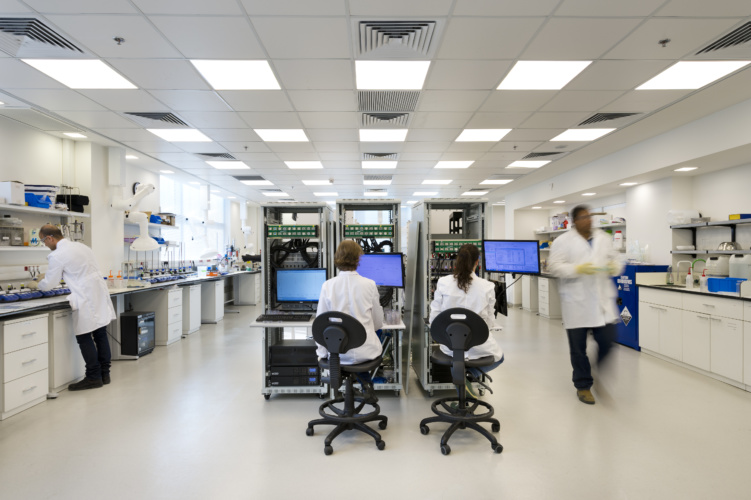In the next decade, it is expected that the world will go through an enormous technological shift, greater than anything that’s happened in the last century. Industries are changing at a rapid pace, with machine learning, artificial intelligence and advanced technology paving the way for a more connected, shared and autonomous world. This trend is most evident when we look to the transport industry. From Google’s driverless vehicles, to Uber’s meteoric rise, to the harmful impact of the world’s favourite mode of transport - the internal combustion engine (ICE) – the attention on alternative, environmentally-friendly modes of transport, has never been more frenzied.
Nottingham to host electric taxi charging trial
Charging technology promises 200 miles in 10 minutes
Of course, all the advancements are exciting, with some more likely than others to impact immediate change. For instance, it’s likely to be decades before totally autonomous vehicles are an everyday reality. The most interesting trend today is the noticeable shift in vehicle ownership, driving attitudes and habits. From the increased use of hybrid and electric vehicles (EVs) to shared mobility, the way we move through the world is changing, so it’s no surprise that the rapid developments in electrification and driver behaviour are interlinked.

Why electric, why shared, why now?
In 2020, the public interest in and perception of the climate emergency has reached new heights. Protest movements have swept capital cities across the world, with school children as young as 16 decrying the current impact of humanity on our planet. It’s no surprise then that mobility trends are also starting to reflect this public opinion. Many people are now seeking alternate forms of transport that will allow them to significantly reduce their carbon footprint. In May 2019, Bloomberg New Energy Finance (BNEF) reported that the global sales of conventional passenger cars had already passed its peak and that within two decades, EVs will replace over 56% of light commercial ICE vehicle sales in Europe, the US and China
Simultaneously, another shift in driving/car ownership habits is occurring, with many opting for car sharing or ride hailing as an alternative means of travel. It begs the question for what these models of shared mobility will mean for EV ownership.
Currently, shared mobility services account for less than 5% of all passenger miles travelled globally. As city dwellers become less concerned about or drawn to the idea of owning their own car, Uber, Lyft, Grab and DiDi now regularly feature in cities around the world. In Moscow for instance, car sharing tripled in 2018. In Berlin and some areas of NYC, it’s now easier to access a car sharing service than it is to hail (or e-hail) a taxi. Meanwhile, Beijing, a densely populated city, has a shared mobility market focused on ride hailing, valued at more than $700 million. City dwellers battle over-population, pollution, congestion and parking charges – all of which make shared modes of transport a far more attractive option. When coupled with ever-increasing public concern for the environment, experts believe that shared fleets will be the first to go electric, with BNEF predicting that by 2040, 80% of the shared mobility fleet will be EVs

Of course, there are many challenges for shared mobility models containing EV’s. Today, EVs can’t offer the same cost and user experience of the ICE. This is a drastic issue for private ownership, and even more so for shared fleets.
The need for charging speed
Shared mobility fleets thrive when their cars are fully utilized or have relatively little downtime. And given the current limitations of EV batteries – charging times and range – it’s no surprise only a small percentage of Uber, DiDi, Grab and Lyft fleets today are electric.
However, all of this will change when EVs can match the range and recharging/refuelling times of an ICE. At StoreDot, our R&D efforts are solely focused on creating a battery that can fully charge an EV in only five minutes. In June 2019, we demonstrated to the world alongside our key partner BP, that the technology is already capable of this. We showed the first full charge of a two-wheeled electric vehicle in only five minutes. For the wider industry, this was an important milestone in showcasing the viability of StoreDot FlashBattery technology, not to mention demonstrating the potential of ultra-fast charging urban scooters for bustling cities.
However, companies like ours cannot operate alone. Ultra-fast charging battery technology is critical to EV adoption, but without the necessary infrastructure to support it, progress will likely stagnate. Given the data we’ve already discussed, this could have significant consequences for the proliferation of shared mobility models.
But every day, we see this charging infrastructure start to evolve. In the UK for instance, BP Chargemaster has begun rolling out ultra-fast charging stations on forecourts across the country. Meanwhile in China, the world’s largest market for EVs, BP has announced a new joint venture with DiDi to build an EV charging infrastructure across the nation – a huge step. When it comes to the automotive manufacturers, we are already working closely with the likes of Daimler to ensure future EV models are ‘ultra-fast charging ready’.
Ultimately, to unlock the true potential of shared mobility models, it’s clear we need to overcome the cost and driver experience issues that prohibit effective and profitable EV use today. However, as the ecosystem and infrastructure required to enable ultra-fast charging continues to evolve at a rapid pace, we can expect the proliferation of shared mobility to grow with it.




Red Bull makes hydrogen fuel cell play with AVL
Formula 1 is an anachronistic anomaly where its only cutting edge is in engine development. The rules prohibit any real innovation and there would be...